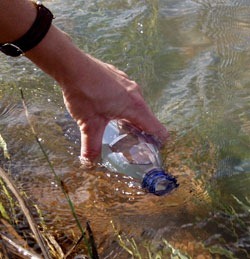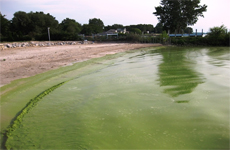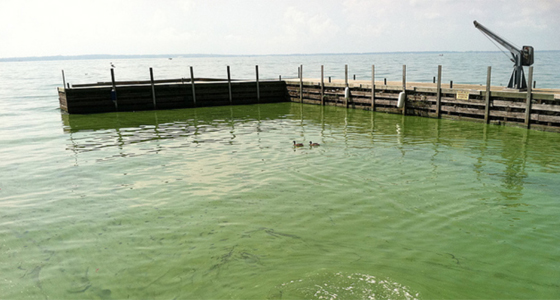Work to Improve Grand Lake’s Water Quality Continues
0
Ohio’s Grand Lake (Credit: Patrick Shepherd, via Flickr)
Ohio’s Grand Lake is the world’s largest manmade body of water built without the use of machinery. A centerpiece of Grand Lake St. Marys State Park, the lake serves an important role in the local economy and is a favorite recreational destination.
But Grand Lake has its problems, suffering from poor water quality underscored by nutrient-rich water and commonly occurring algal blooms. In response, the Ohio Department of Natural Resources has combined multiple remediation methods to bring the lake back to full health.
“Having grown up near Grand Lake St. Marys, I realize how important the lake is to the local community,” said James Zehringer, director of the Ohio Department of Natural Resources, in a blog post.
Zehringer says that there has been progress, but there is still work to be done to get Grand Lake at full health. “My intention is to make certain that this wonderful place continues to offer visitors and local residents a way of life and a place to play for many years to come.”
ODNR has instituted several cleanup strategies in Grand Lake. Bottom-feeding fish that wiggle around, flinging up sediment have been removed. More than 17,000 pounds of these fish have been taken out in 2013.
Phosphorus in Grand Lake’s water largely comes from agricultural runoff and plays a role in spurring algal blooms. To manage its levels, ODNR set up water dosing stations and treatment wetlands at Prairie Creek. Water is lifted from Prairie Creek and treated with alum to precipitate phosphates. It’s then released into farmlands converted into wetland that serves as a natural filter.
The Prairie Creek wetlands were completed in fall 2013 and Zehringer says initial testing shows phosphorus reductions in water of about 89 percent after flowing through the treatment system. He says that 57 percent of nitrogen in the creek’s water is being removed.
“Reducing nutrient loading is an important step toward reducing harmful algal blooms at Grand Lake St. Marys,” Zehringer said.
Nutrient-rich sediment that contributes to algal blooms in Grand Lake is being removed through dredging, with operations increasing in recent years. ODNR supported dredging to remove nearly 272,000 cubic yards of sediment from the lake in 2011. The following year, 289,000 cubic yards were taken out and 2013 saw a record 302,226 cubic yards removed, the most ever suctioned out of Grand Lake.
“That equals 20,151 dump truck loads,” said Zehringer. “If someone lined the trucks up bumper to bumper, they would create a traffic jam more than 95 miles long.”












